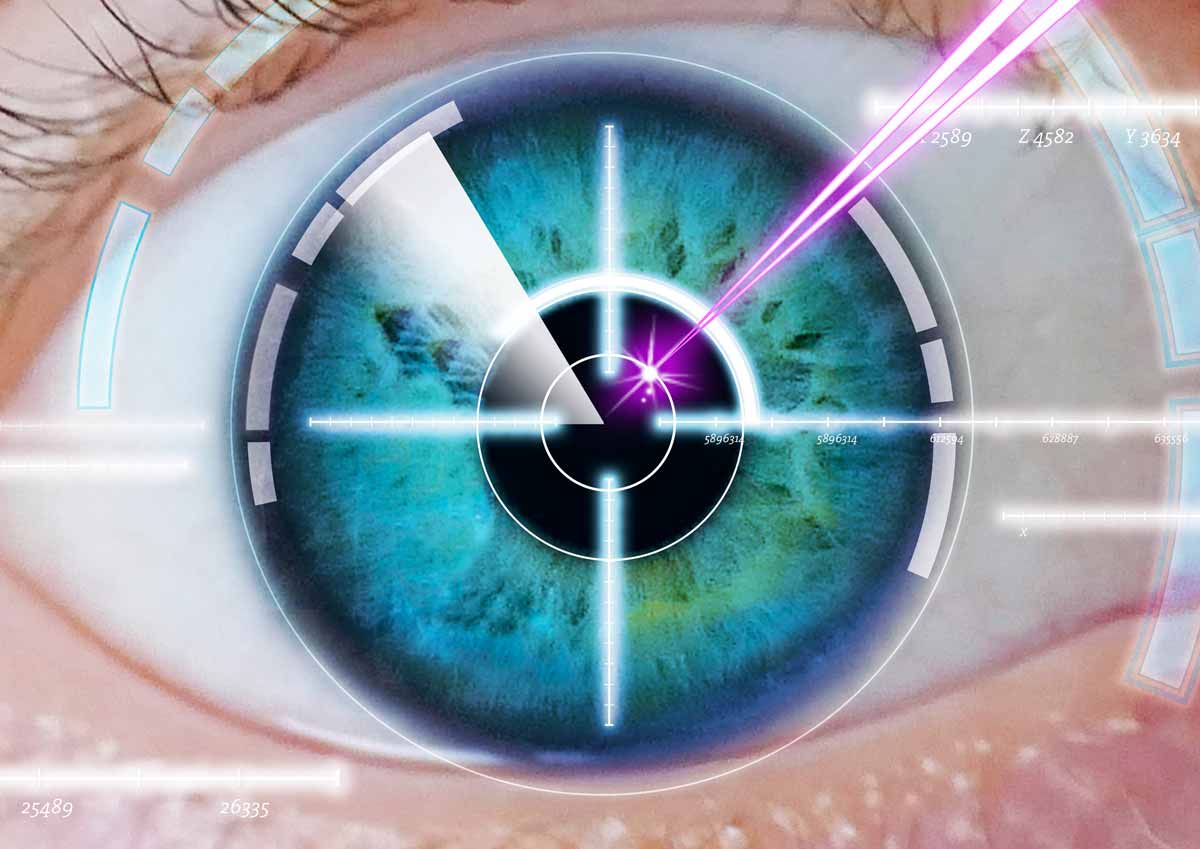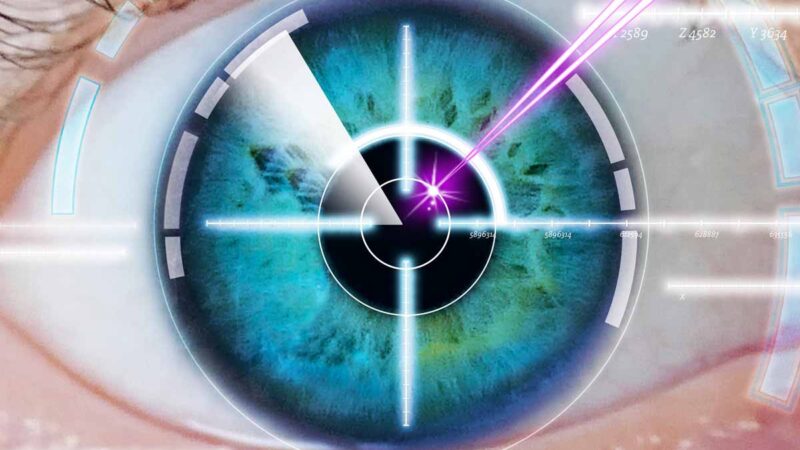LASIK Eye Surgery: Procedure, Benefits and Risks

“If you see with innocent eyes, everything is divine”- Federico Fellini
In 1948, a Spanish ophthalmologist, wanting to solve the issue of blurry vision of the human eye without use of glasses or lenses, devised a surgery called keratomileusis. His name is Dr. José Ignacio Barraquer Moner, also known as the father of modern refractive surgery. Keratomileusis comes from the Greek word ‘kerat smailusis’ which literally translates to carving the cornea. This medical procedure paved the day for modern day LASIK which is commonly referred to as laser eye surgery.
LASIK stands for laser-assisted in-situ keratomileusis. This procedure was invented by Iranian American ophthalmologist Dr. Gholam A. Paymen. LASIK is an outpatient surgical procedure that permanently changes the shape of the cornea through a laser that results in normal and clear vision.
Before knowing the procedure of LASIK, we should understand how the eyes work. Light enters the eyes through the pupil, passes through the lens that focuses it on the retina to form the image of the object. The retina sends signals to the brain through the optic nerve and hence vision is created. The thin, clear protective layer on the pupil is called cornea which refracts light into the pupil.
Sometimes the shape of the cornea changes due to many factors such as age or exertion on eyes. This causes blurry vision or power of the eye. Positive powers mean farsightedness or hyperopia i.e., objects near to the eye seem blurry. Negative powers of the eye mean near-sightedness or myopia i.e., objects farther from the eye seem blurry.
Procedure-
Pre- Lasik check-up is done before performing the LASIK surgery. In this check-up various parameters are checked and noted such as age of the patient, existing power in the eyes, pachymetry i.e., thickness of cornea, topography i.e., curvature of cornea, pre-existing conditions such as dry eyes and cataract.
At the beginning of the surgery the patient is made to lie down on its back. Local anaesthesia in the form of eye drops is put in the eyes to numb the eyes. The area around the eyes is washed and cleaned properly. The doctor will place lid speculums on your eyelids to keep them open. Then the doctor will place a ring on your eye that will create suction on the cornea. The cornea will lift a bit inside the ring. The patient’s vision will get extremely blurry at this point of time. Then the doctor will partially slice about 20% of the exterior part of the cornea (epithelium) with a blade called microkeratome to create a corneal flap. The doctor will remove the microkeratome and the ring and open the flap aside carefully. Then with a computer aided pulsating excimer laser the doctor will reshape the cornea. The laser vaporises small tissues in the interior cornea (Stroma). For near- sightedness patients the cornea is flattened and for far-sightedness the cornea is steepened. For Astigmatism the cornea is made smooth with the help of a laser. Once the reshaping is successful the doctor will place the flap to its original place. The epithelium regenerates and bonds rapidly and therefore stitching is not required. The doctor will administer some antibiotic drops and cover the eyes with a shield. The surgical procedure is over. While the procedure sounds excruciating and petrifying it is rather simple and quick. The procedure will be over in the blink of an eye, figuratively speaking.
There are different types of LASIK procedure according to the method of creating corneal flap. Blade LASIK is the procedure in which the corneal flap is made with a microkeratome blade. Femto-laser LASIK is the procedure in which the flap is made with the use of femto-laser. PRK is a predecessor to LASIK in which no flap in the epithelium is made, rather the epithelium is completely removed, and the laser reshapes the cornea. Since the whole epithelium is removed in PRK the recovery is longer in this procedure. SMILE procedure is a successor to LASIK in which a laser is used to create a contact lens shaped piece of stroma within the cornea which is then removed through a small incision. Contoura Vision Surgery or Wavefront guided LASIK is the latest form of LASIK surgery. In this procedure a digital mapping of the eyes is done which detects even the most minute irregularities in the curvature of the cornea. These are then corrected through the computer-aided controlled laser. This procedure results in the clearest vision possible.
Benefits and Risks-
LASIK is a permanent solution because the interior cornea or stroma regenerates at a slow pace and hence 99% of the people that have undergone LASIK have never used power glasses or contact lenses ever. The recovery post-surgery is quick. All recoveries happen within 3 weeks and the patients can return to normal living. Most patients even start driving on their own within a week.
Being one of the biggest IT hubs of the world, India has several cases of successful LASIK surgeries every year. LASIK surgeries in India cost about ₹20,000 to ₹1,50,000 depending upon several factors. Interestingly, there are more reasonable options in the less populated cities, for example, if you look for an eye hospital in Kochi, you can find a centre which will not be that expensive for painless Lasik surgery, whereas the hospitals in North India are comparatively more expensive.
Risks and complications of LASIK are very rare. Some patients may experience dry eyes as LASIK surgery may intervene with tear production. There are chances of under-correction or overcorrection post-surgery. Some patients also complain about temporary irritation in eyes, glares and vision loss. LASIK might be an expensive treatment for some people.
Overall the benefits of LASIK outweigh its risks.







